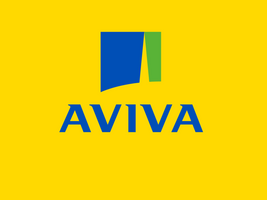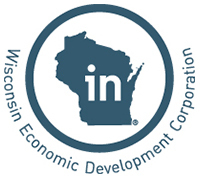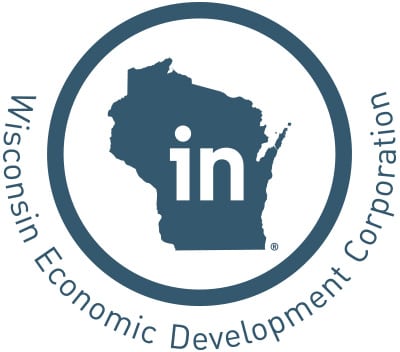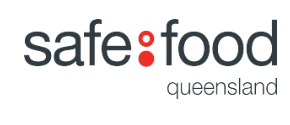Title Page
-
Site
-
Conducted on
-
Prepared by
-
Location
-
ON to access Instructions on How to Use this Checklist
How to use this checklist:
-
1. Appoint a team including senior management, super visors, workers’ representatives, and responsible enterprise safety and health personnel.
2. Brief and train the team on the steps to
implement the checklist.
3. Complete the checklist and write your check
results.
4. Plan, as the team, what action should be
taken, by whom and when. Look for a way to
apply the measure, if necessary, ask the area
manager or workers for advice.
• If the measure has already been applied
or is not needed, mark No” under “Do you
propose action.”
• If you think the measure would be
worthwhile, mark Yes.
• Use the space under Notes to add
comments, describe a situation or add a
suggestion.
5. Look again at the items you have marked
Yes. Choose the items that you consider to be
most important and mark them as Priority.
6. Immediately after completion of the
checklist, organize a group discussion with
the team to prepare suggestions to
management (Experience has shown that this
step is essential for promoting positive
change)
7. Present the results of the group discussion
to management for planning the continuous
implementation of the improvements
The team should not hesitate to seek
clarification from Occupational Safety and
Health authorities, labour inspectorates,
national safety organizations or national OSH
professional associations, Employers and Workers organisations.
This is not an exhaustive list of all necessary
measures. The team should add to the checklist
any additional items they consider appropriate to
improve response to COVID-19 at the workplace.
Management needs to comply with national
legal obligations in establishing their workplace
COVID-19 prevention and control plan.
I. POLICY, PLANNING AND ORGANIZING 02
-
1.Develop and post a statement of management’s<br>commitment and responsibilities to reduce the<br>risk of exposure to the virus and transmission of<br>COVID-19 at the workplace in consultation with<br>worker representatives.<br>Do you propose Action?
-
2.Develop a preparedness and response plan for<br>COVID-19 prevention at workplace, considering<br>all work areas and tasks performed by workers and<br>potential sources of exposure<br>Do you propose Action<br><br>According to the 2001 ILO Guidelines on<br>occupational safety and health systems (§3.10.3.)<br>arrangements for emergency prevention,<br>preparedness and response should be made<br>according to the size and nature of activity of<br>the organization. They should be established in<br>cooperation with external emergency services and<br>other bodies where applicable and: ensure that the<br>necessary information, internal communication and<br>coordination are provided to protect all people in<br>the event of an emergency at the worksite; provide<br>information to, and communication with, the relevant<br>competent authorities and the neighbourhood and<br>emergency response services; address first-aid and<br>medical assistance, firefighting and evacuation<br>of all people at the worksite; and provide relevant<br>information and training to all members of the<br>organization, at all levels, including regular exercises<br>in emergency prevention, preparedness and<br>response procedures.
-
3.Regularly consult your occupational health services, local public health authority or other partners, which may have developed information materials to promote workplace prevention of ris<br>Do you propose Action?
-
4.Establish a workplace system for providing upto-date reliable information to workers on the emerging situation on COVID-19, with reference to information released by national or local health authorities.<br>Do you propose Action?
-
5.Map the hazards of all operations and covering<br>all jobs.<br>Do you propose Action?
-
6. Integrate safety and health into your contingency and business continuity plan and consider other labour related requirements including where operations must be done with a reduced workforce.<br>Do you propose Action?
-
7. Promote teleworking for non-critical workers to minimize the spreading of COVID-19 in your workplace. <br>Do you propose Action?
-
8.If teleworking is not feasible introduce shifts to avoid large concentrations of workers in the facilities<br>Do you propose Action?
-
9. Develop a plan of what to do if a confirmed or suspected case of COVID-19 is identified at the workplace that includes among others reporting,<br>monitoring, and disinfection in line with the national guidelines.<br>Do you propose Action?
-
10. In line with national standards, expand access to paid sick leave, sickness benefits and parental/care leave and inform all workers<br>Do you propose Action?
-
11. Establish a monitoring and evaluation mechanism of the COVID-19 prevention strategies and plans<br>Do you propose Action?
II. RISK ASSESSMENT, MANAGEMENT AND COMMUNICATION
-
12. Assess the risk of potential for interaction<br>with workers, contractors, customers and visitors at the workplace and contamination of work environment, and implement measures (see section III).<br>Do you propose Action?
-
13. Train management, workers and their representatives on the adopted measures to prevent risk of exposure to the virus and on how to act in case of COVID-19 infection. For high-risk workers, the training should include the correct use, maintenance and disposal of personal protective equipment (PPE). <br>Do you propose Action?
-
14. Inform workers that each has a right to remove from a work situation that poses imminent and serious danger for life or health, in accordance with national law and laid out procedures and immediately inform their immediate supervisor of the situation<br>Do you propose Action?
-
15. Assist delivery workers, truck drivers an other transportation workers to minimize the direct contact with customers and ensure personal hygiene practices such as hand washing and use of hand sanitizers. Consider providing personal protective equipment if workers are in direct contact with clients<br>Do you propose Action?
-
16. Travel should be avoided if not essential. Assess risk of COVID-19 infection when business travels are planned (for all the phases of travel and job assignments)<br>Do you propose Action?
-
17. Maintain regular communication with workers and workers’ representatives, including over the internet, or when not possible, over the phone<br>Do you propose Action?
-
18. Assist workers to manage any emerging psychosocial risks, new forms of work arrangements, and in the promotion and maintenance of healthy lifestyles including diet, rest and sleep, exercise and social contacts with friends and family. <br>Do you propose Action?
III. PREVENTION AND MITIGATION MEASURES
-
19. Organize work in a way to allow for physical distancing of at least 2 meters (6 feet) from other people or another distance as prescribed by the relevant competent authority.<br>Do you propose Action?
-
20. Avoid face-to-face meetings, giving preference to phone calls, email or virtual meetings. If you need to organize meetings, organize the space to allow for physical distancing.<br>Do you propose Action?
-
21.Provide staff, customers and visitors with ample and easily accessible places where they can wash their hands with soap and water, disinfect hands with sanitizers, and in addition, promote a culture of hand washing. <br>Do you propose Action?
-
22. Put sanitizing hand rub dispensers in prominent places around the workplace and make sure these dispensers are regularly refilled<br>Do you propose Action?
-
23. Promote a culture of regular wiping of desks and workstations, doorknobs, telephones, keyboards and working objects with disinfectant and regularly disinfect common areas including rest rooms. Surface frequently touched should be cleaned more often. Depending on the operations, consider hiring cleaning and disinfecting services. <br>Do you propose Action?
-
24. Improve exhaust ventilation and provide more clean make-up air to rooms and operations with high risk of exposure to the virus.<br>Do you propose Action?
-
25.Promote and communicate good respirator hygiene at the workplace, such as covering your mouth and nose with your bent elbow or tissue when you cough or sneeze. <br>Do you propose Action?
-
26. Ensure social distance at the workplace and<br>remain out of “congregate settings”4 as much as possible<br>Do you propose Action?
-
27. Provide appropriate facemasks and make available paper tissues at worksites, for use by those who develop a runny nose or cough, along with closed bins for hygienically disposing of them. <br>Do you propose Action?
IV. ARRANGEMENTS FOR SUSPECTED AND CONFIRMED COVID-19 CASES
-
28. In line with the local authorities guidance, encourage your workers with suspected symptoms of COVID-19 not to come to the workplace and to follow the guidance of the local authorities<br>Do you propose Action?
-
29. Advise workers to call their healthcare provider or the local public health department when they have serious health condition including trouble breathing, giving them details of their recent travel and symptoms. <br>Do you propose Action?
-
30. Arrange for isolation of any person who develops COVID-19 symptoms at the work site, while awaiting transfer to an appropriate health facility. Arrange for disinfection of the work site and health surveillance of persons who have close contact<br>Do you propose Action?
Sign Off
-
Prepared by




















